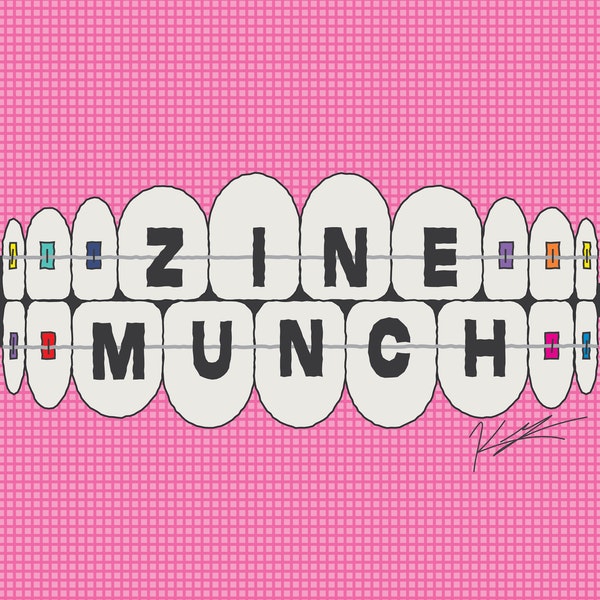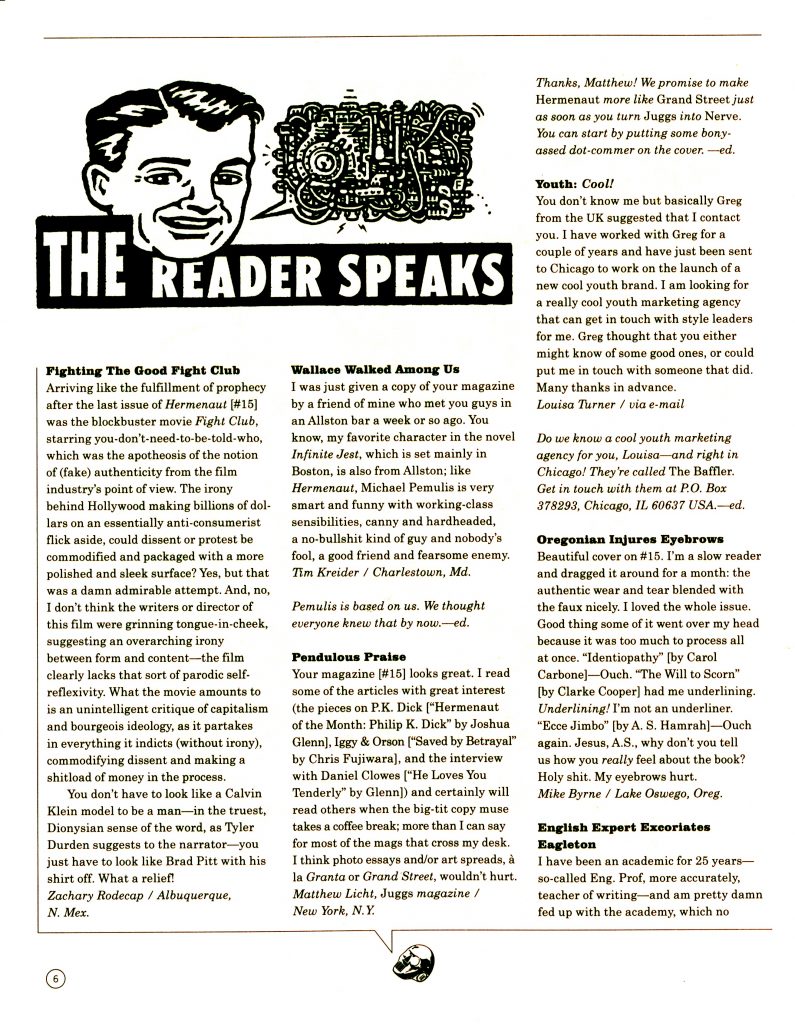ZINE MUNCH
By:
May 4, 2022

Last year, I mentioned that Lucas Gelfond, an undergrad at Brown, had persuaded me to donate a complete run of Hermenaut — the intellectual print zine/journal that I published from 1992–2001 — to Brown’s library. Since then, Lucas has continued to encourage me to work on pulling together a Hermenaut archival website and/or book. We’ll see!
Lucas continues to be inspired by the history of zines — not just Hermenaut, by any means — and intellectual and artistic “little magazines” and journals too. So he’s started ZINE MUNCH, a zine-like newsletter about zines, which will focus on interviews with zinesters past and present.
I’m excited about Lucas’s project — not merely because he chose me to be the first interviewee; see today’s installment — but because I continue to be interested in this topic… even though it’s been 30 years since I started Hermenaut. For example, here’s a 2013 series that I wrote about the Zine Revolution; the last several installments are mostly about Hermenaut.
Excerpt from the interview:

LG: I loved the section of the magazine where you’d respond to letters to the editors. What was your thought process there?
JG: I really liked National Lampoon as an adolescent. When I look back at the Lampoon now, of course, I cringe. But their letter section was fucking brilliant — because they just made up all the letters. They would just be terrible jokes. I was also inspired by the letter sections of those mid-century intellectual magazines I’ve mentioned — because debates would rage within and between little magazines via the letters — which contributed powerfully to the sense that this publication is participating in a living, breathing intellectual culture. We don’t even know how to have debates now. What’s so enjoyable about reading the letters in these midcentury journals is the sense of agonistic collegiality — we’re pushing each other really hard, but with respect too.
It wasn’t just the letters section that didn’t have to be boring. Why can’t every section of a periodical be something that you would want to read? Like, the masthead, that should be interesting. And the advertising. One of Marshall McLuhan’s most interesting insights is that when people read magazines, what they’re really reading is the advertising — because it’s the ads that tell readers who the magazine thinks they are. I may be misremembering the quote.
I started reading histories of independent American magazines that had succeeded — Playboy is one of the famous examples. It’s a reprehensible magazine in many ways, but I admire how strategic Hugh Hefner was when it came to the advertising. The ads in Playboy said to the reader, “By reading this publication, you can participate in the swinging, anti-uptight culture that is just beginning to emerge.” Rolling Stone did something very similar.
If you read literary and intellectual magazines today, it’s mostly just ads from publishing houses and galleries, which is fine but it can feel too precious and rarefied. I wanted to have some of that stuff too, but we really wanted to have indie record labels and, like, weird stores from our neighborhood that we loved. Some of these establishments didn’t even have a marketing department, so we would create the ad for them. Richard Grijalva, who came on eventually to sell ad space in Hermenaut, would reach out to his favorite indie labels and say “You can pay any price. We just want an ad from you in our magazine.” Which is how we ended up running ads for Verso and Fantagraphics and Emperor Norton Records all on the same page. Also, I liked having a lot of ads in our pages — I don’t like the supposedly classy, ad-free look of most scholarly journals.
PS: To be clear, we didn’t invent any letters to Hermenaut. But we didn’t feel the need to respond earnestly or respectfully to reader letters…
Can’t wait to see what’s coming next in ZINE MUNCH!
